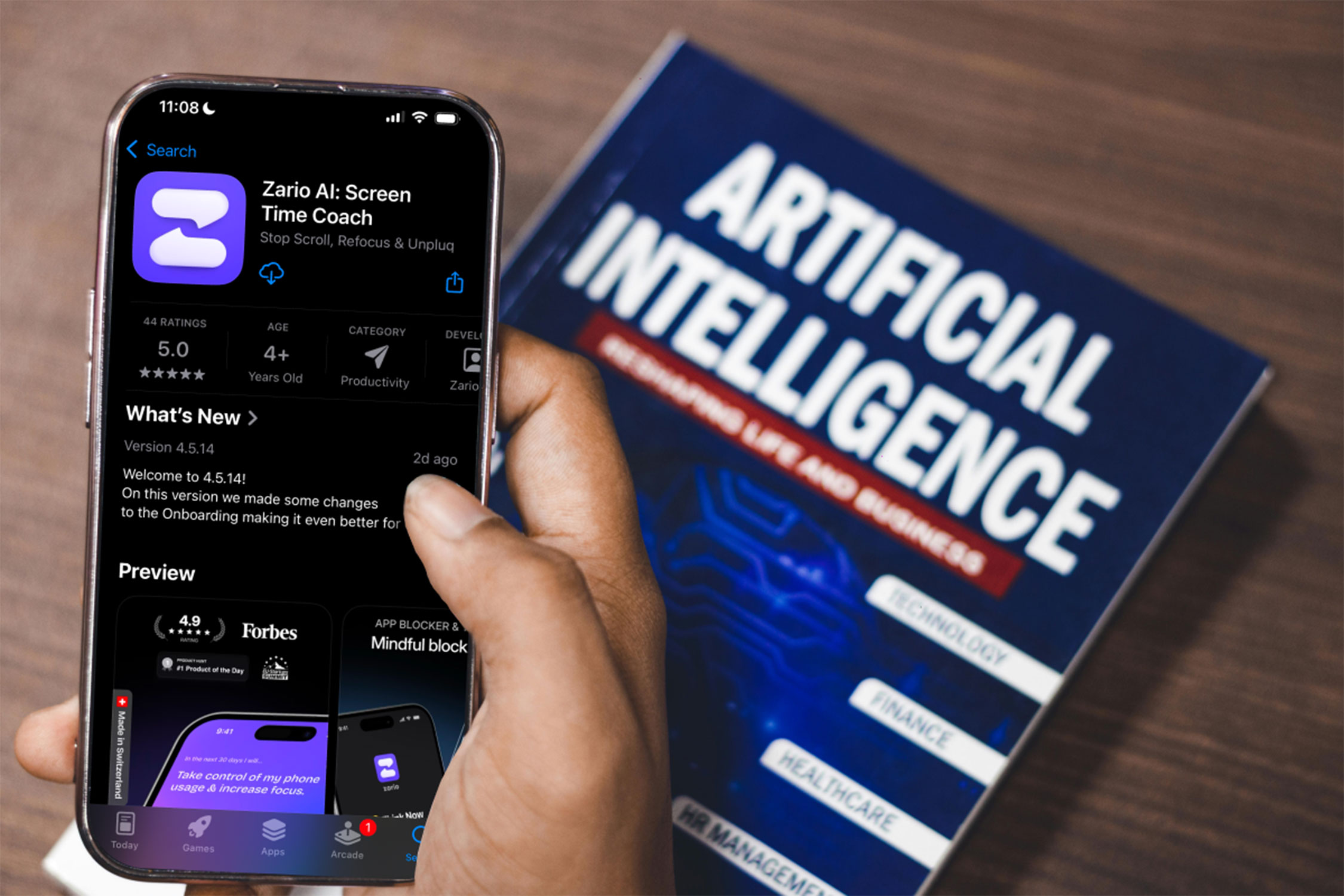
Processor Wars: How Qualcomm Lost Its Early Lead
www.technewsworld.com
Since Microsoft launched Copilot+, the past few months have been a battleground for PC manufacturers. Qualcomm initially had a huge lead, but then AMD and Intel came out with Copilot+ PCs that cut into that advantage.AMD outperformed Intel with a broader line of compliant products, while Intel focused on the premium market. Meanwhile, Qualcomm saw its design wins decline, and the laptop PC market has shifted more in AMDs favor, though Intel remains the dominant player overall.Why didnt we see the big shift to Qualcomm, and what happened to Intel that cost its CEO?Lets break it down and well close with my Product of the Week, which has been keeping my driveway clear for the last week or so.Why Copilot+ PCs Struggled To Gain TractionMicrosoft rushed to market with Copilot+ for PCs with two primary features. One was Cocreator, a derivative of Dall-E, which could have been pretty handy (I use Dall-E a lot these days). The other was Recall, an automatic indexing tool designed to help users find hard-to-locate files. That was pretty much it at launch.However, Microsoft positioned Recall poorly and had to pull it back. Cocreator by itself on a laptop as opposed to a desktop PC or workstation where folks usually mess with graphics turned out to be not very interesting.So, for a time, Qualcomm had only Copilot+ PCs. People werent too excited about Copilot+, and by the time Office began showcasing AI capabilities, PCs from AMD and Intel were available to run it. Unfortunately, Qualcomms brand name wasnt as well known in PCs as AMD or Intel. In addition, Qualcomms product had a compatibility problem that made it largely unacceptable in large companies, so enterprise and large business sales never really emerged outside of trials.A heavy marketing campaign was needed to sell people on the features of running Copilot+ locally. That never emerged, so AI PCs became an AMD and Intel project, with Qualcomm increasingly on the sidelines.What Qualcomm Should Have DoneQualcomm had three advantages in the market: great battery life, the strongest wireless networking of any of the three vendors, and dominance in premium smartphones, which are basically pocket PCs.Qualcomm pushed hard on the AI aspect, which Microsoft fumbled badly. It did mention battery life, but it wasnt successful in making its PCs 5G-capable, which removed that advantage. Finally, it didnt have a better together story to leverage its strong smartphone advantage.Taking on entrenched vendors like AMD and Intel is very difficult, but Qualcomm almost acted like it wasnt that important, even though it acted seriously about this market. In addition, because it had a compatibility problem, it needed to do targeted marketing for the low-hanging fruit: users who wouldnt experience this shortcoming, influencers, small business owners, consultants, attorneys, and others who dont run a lot of custom apps or need to play PC games on their laptops. However, Qualcomm didnt target these users. As a result, while compatibility improved, people tended to lose interest in Qualcomms offer over time.Qualcomm could also have created a halo product that showcased its strengths. The HP Folio PC was an ideal configuration for much of the audience Qualcomm needed to capture, and it launched with an older Snapdragon processor and a 5G modem, making it nearly perfect.Intel displaced Qualcomm with an inferior product (for this use case), and eventually, HP discontinued the Qualcomm-powered PC. Losing the Folio was disappointing because it was my favorite PC of all time. It showcased that with the right internals and effective marketing, a Qualcomm-based PC could have gained traction with users who valued its unique advantages.If both HP and Qualcomm had put some decent marketing behind this laptop, it would have helped build interest in Qualcomms solution, and it would be in a vastly stronger position than it is now.Intels Challenges and Leadership Shake-UpIntel and Microsoft dont see eye to eye often, which has been problematic for both companies execution over the years. Intel seemed to take Microsofts requests as bad suggestions, which forced Microsoft to work with Qualcomm rather than Intel. AMDs reputation was more on the high-performance side, and while AMD executed well, it didnt have anything ready at launch. That gave Qualcomm the huge initial advantage that it failed to capitalize on.This failure appeared to be connected to a prior CEOs decision to reduce the focus on PC technology in favor of smartphones, an effort that failed spectacularly due to poor execution and some questionable behavior by Apple that left Intel out of step with both AMD and Qualcomm.Most recently, Intel lost its CEO partially due to a change in U.S. leadership where the proximity of the Intel CEO to the prior administration might have created some excessive friction and the anticipated loss of U.S. funding for its fab and foundry business. This situation again highlights the markets resistance to significant strategic moves that come at the expense of short-term performance a disappointing reality, given the strategic importance of U.S.-based semiconductor manufacturing.Now Intel has co-CEOs, which is stronger tactically but makes it harder to execute strategically. In addition, Intels CMO support was below where it needed to be, and Intels CTO was more of a COO, leaving the critical CTO underperforming. The CTO sets the vision for strategic moves. Without that, the short-term problems likely contributed significantly to CEO Pat Gelsingers premature departure.Intel needs to appoint a real CTO. Theres a new CMO, but Intel needs to both support and fund him to reform Intels image as a market leader.How AMD Outperformed Intel and QualcommAMDs people just put their heads down and executed, and of the three vendors, it ended up doing the best, even suggesting it would buy Intel. Qualcomm was on the list of companies looking to buy Intel, too. However, Intel is both more complex and far larger than either AMD or Qualcomm, making it unlikely that either company would be comfortable making this acquisition.AMD would be the strongest of the two because it shares both market coverage and x86 technology, meaning it would be better able to step in seamlessly to lead Intel. Still, given how complex Intel is and the cloud its under, it seems unlikely either firm will be able to make an Intel acquisition happen.So, as AI hit, while Qualcomm had the initial potential benefit, AMD has seen the greatest benefit, primarily because it just outexecuted the other two companies.There is something to be said about focus. AMD showed an incredible level of focus over the last decade, which helped it achieve significant growth and benefit from the latest trends. Its recent financial results were impressive.AMD could have displaced Intel during this cycle, but that would have required substantial additional investments. As I noted above, the market isnt rewarding strategies that pull from the present to create a stronger future. AMD played the market well in this cycle.Wrapping Up: Nvidias AI Supremacy and Future in PCsIt has been an interesting few months since Microsoft launched Copilot+. Execution was key, and AMD outperformed Qualcomm and Intel by just sticking to what its good at. However, Nvidia remains the king of AI in hardware, and it also has an Arm-based processor coming, which means it could disrupt the market as AI matures.However, we are still at the very front of the AI wave. By the end of it, I expect both smartphones and PCs will have been replaced by hardware that better addresses the need to interact with AIs in a way we never did with PCs. A massive disruption is coming, and only Nvidia appears truly positioned to drive it. Well, and Huawei, but well save that for another column.Yarbo AI-Powered Snowblower RobotImage Credit: YarboWhile I got my first Yarbo over a year ago, I never put it together because Id broken my back and couldnt mess with something that heavy. As it turned out, there were problems with that first generation, and Yarbo generously offered me the option of an upgrade to a newer unit for a relatively small upgrade cost compared to Yarbos $5,000 sales price.The Yarbo is an AI-driven, GPS-connected yard robot. While I only have configurations for snow blowing and security (it can patrol the outside of your house), depending on the accessories you buy or use, it can also mow your lawn, spread fertilizer, pull a trailer (to stow it), and blow leaves. Mine is a blower only, but it also comes with a trailer hitch and a security head unit if I want it to patrol my yard after the snow melts.Some of the Yarbo yard robots and accessories (Image Credit: Yarbo)Yarbo has sold over 5,000 units to date, making it one of the most successful robots for the outdoors, if not the most successful, this last year. This is an AI/GPS robot, so you dont have to trench and put in boundary wires, like many of the early robotic lawnmowers. It charges inductively, which means you can run and charge it even if you arent home.It does need to see the GPS satellites, which can make placement of the base station difficult (the base station communicates with the Yarbo). My initial base station placement attached to the house didnt work, so I had to move it to one of my sheds. It works fine now, though Im not a fan of having to run an extension cord over my driveway.I noticed that the Yarbo really doesnt like uneven pavers. Neither does my Honda snowblower, but at least I can rock it back to go over the problem areas. You have to set the Yarbo so the blower is a bit higher, which means it isnt going down to the road. I hope a future software patch will address this.Yarbo snowblower at work (Photos by Author)In addition, it comes with winter treads with built-in studs that can tear up an epoxy garage floor like mine, but it has been working okay with the summer treads so far. Running it out of your garage is somewhat problematic anyway since it requires a line of sight to the GPS satellites.It comes with what looks like an Xbox controller that you can use to drive the Yarbo manually and map out the area you want it to service. It also uses a smartphone app. Yarbo does a good job of detecting people and animals, and it will stop if either approaches it. It also has an emergency off switch.I have a large, long driveway, around 3,000 sq. ft. The Yarbo takes about an hour and a half (using half its battery charge) to complete that job. You can tell it where to put the snow, and it will craft a far better plan than I have ever made to clear it all.Although the Yarbo isnt a cheap date, it allows me not to get up early to clear snow in the morning, and it runs autonomously unless it gets into trouble (those damned pavers). Ive really enjoyed setting it up and using it. As a result, Yarbo is my Product of the Week.
0 Σχόλια
·0 Μοιράστηκε
·36 Views










